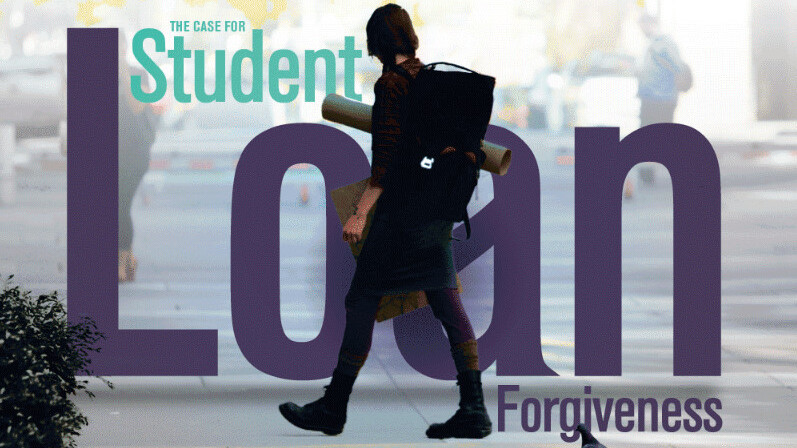
Since 1980 the cost of college tuition has tripled while the average income has remained basically the same. As a result families have struggled to send their kids to college at a time when a college education has become more critical than ever to even just being able to survive in the job market.
The result has been an explosion in student loan debt, and it’s starting to wreak havoc on the economy. Many experts are warning that this is an economic bubble that is going to burst, much like the housing bubble.
Crushing student loan debts are preventing people from being able to participate in normal economic activities like buying homes and cars, and it is even preventing people from being able to participate in crucial consumerism habits like buying gifts during the holidays. There’s a mounting call for student loan forgiveness, if not to unburden individuals from their crushing debt to save the economy from another potential collapse.
What’s behind the rise in tuition?
It’s easy to point to decreased funding for public colleges and universities, and while that’s the main culprit it’s actually a lot more complicated than that. In the 1980s there was an economic recession that left many state budgets extremely tight.
The shortfall eventually made its way to colleges and universities, which responded by raising tuition. So much of the burden of the cost of college fell on the students that colleges and universities had to compete for them (think: what am I getting out of this arrangement when I write you a huge tuition check?).
As a result they started offering scholarships, recruiting better faculty, and improving facilities to attract students. Tuition continued to rise, and funding from the state and federal governments slowed to a trickle.
The Student Loan Swindle breaks it down: “Looking just at the years between 2007 and 2012, tuition at public four-year colleges has gone up by more than 15% in 40 states, more than 25% in 18 states, and more than 50% in seven states. California and Arizona increased their public university tuition by more than 70% between 2007 and 2012.
Across all public institutions of higher education in the nation in 2011-12, state funds appropriated for colleges and universities fell by a staggering 7.6% – in a single year! The Center for the Study of Education Policy claims that is the largest annual drop in half a century. Cuts like these are the engine driving the tuition increases that have completely reshaped the American educational landscape.”
Instead of funding college education from the public coffers, because let’s face it, we all benefit from a more educated populace, we as a society have decided that the cost of a college education should be borne by individuals. One result is a five year decline in college enrollment. Another result is a dramatic decrease in consumer spending.
Massive debt hurts the economy
When people who are getting out of college can’t spend money on things like houses and cars because of their average $27k+ student loan debt, the whole economy suffers. Many market analysts believe the student loan debt bubble has been dragging the economic recovery from the Great Recession. And they have been sounding the alarms about it for years. A 2012 New York Times report found:
- 40% of graduates with student loan debt delayed making major purchases
- State expenditures for education have dropped, while state expenditures for prison have risen
- There are no standardized disclosure forms for college tuition like there are with auto or home loans
- Students at for-profit colleges are twice as likely to default on student loan payments
A third of consumers report that their student loan debt prevents them from spending money during the holidays, a time when retailers need every last dollar to get into the black for the year. Of these consumers, 61% spend less money on gifts, 39% spend less on travel, 28% give less to charity, and 28% spend less on holiday gatherings.
Student loan debt also affects borrowers’ abilities to fund retirement and save. According to Investopedia:
- 32% of Americans have spent money earmarked for retirement on student loans
- 57% of Americans plan to use some of their retirement funds to pay for student loans
- 34% of Americans with student loan debt aren’t saving for retirement at all
Should student loans be forgiven?
There are several programs that help certain people in certain fields reduce a percentage of their student loan debt, but that alone is not enough to free most Americans being constantly dragged down by student loan debt. There is a case to be made for student loan forgiveness, but it’s a very complicated issue that doesn’t have an easy answer.
But one thing is clear: funding colleges and universities so that people don’t have to take on massive debt loads to begin with would be far better for the economy than our current situation, and it’s likely to improve the workforce to boot.
Get the TNW newsletter
Get the most important tech news in your inbox each week.





